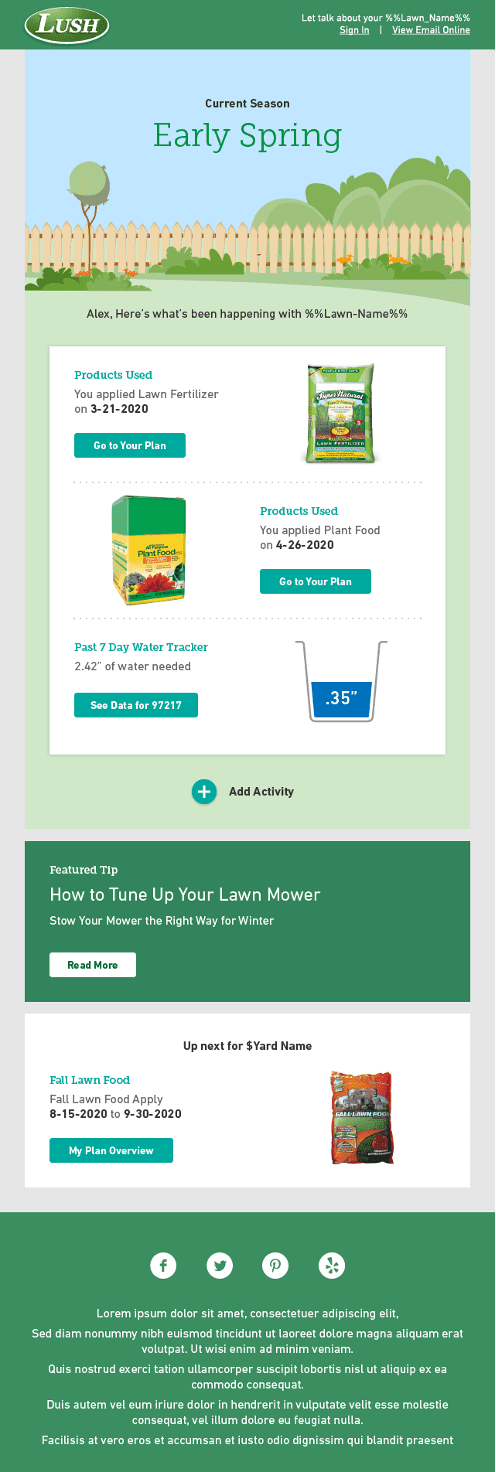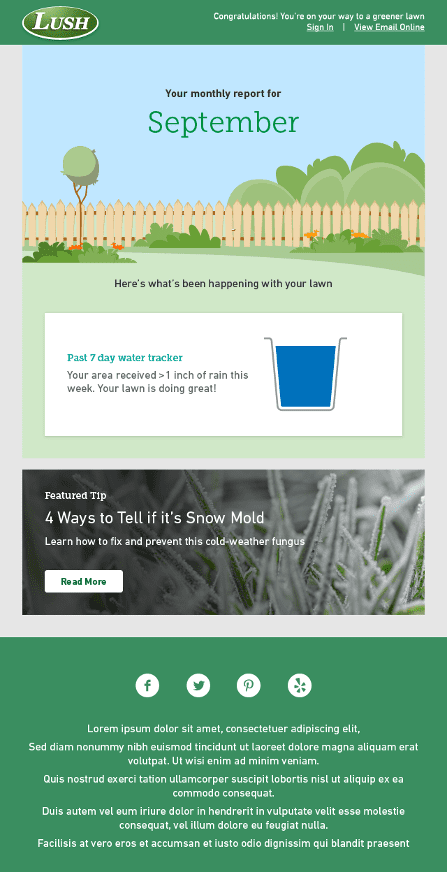Built from email marketing, Trendline Interactive is an agency and consultancy that inspires meaningful engagement through cross-channel communications.
Read on for their guest contribution to the Iterable blog to learn why data needs to come before the design of dynamic content.
You’ve probably heard of the saying “Form follows function.” In email marketing, the saying would be “Design follows data.”
In other words, the data you plan to use in a campaign, whether a stand-alone email campaign or as part of a nurture series or journey email, should dictate the set-up and design of that email, instead of the other way around.
How Data and Design Work Together
Let’s say you’ve heard a lot about dynamic content, and so you go to your email development team and say, “Can you design me a template for dynamic content now? We can figure out the back end later.”
The short answer: No. Design cannot run ahead of the back-end development of dynamic content because the data sources or data files might not be reliable.
Email design needs to accommodate “graceful degradation”—a design term that means an email is designed for the viewing clients that support its features and has fallbacks built-in so the email can be viewed on older, less capable email clients. (See the end of this post for an example.)
When you let an email design get out ahead of your data, you end up with blank fields (like the dreaded “Hello {{firstname}}” failure). If you haven’t planned for these incidents, your emails look like disaster zones to your customers, and that can sabotage your campaign success.
What You Need to Move Up to Dynamic Content
Dynamic content is an email component that changes automatically for each subscriber according to the data you have on that subscriber, such as preferences, opens and clicks, purchases, browsing and other behavior.
Dynamic content can help you create emails that are as close to one-to-one communications with your subscribers as you can get at scale. They also deliver open and click rates that range from 10% to 15% higher than static emails and can even outperform triggered emails, like purchase confirmations or abandoned-cart follow-ups.
But dynamic content also requires a healthy amount of subscriber or customer data, which determines which content the recipient will see and what content will display instead when you lack the necessary data.
That’s why designing for dynamic content requires forethought and strategy, as well as an understanding of how HTML works in email. Your creative team must account for the dynamic modules that will be hidden or replaced with alternate content if the message goes to subscribers without matching data.
Verifying your data quality is a key part of the design process. It’s as important as choosing images, writing copy or creating a call to action.
If you don’t first verify which of your data fields are unreliable and which are definitely unusable, you can’t design the proper containers or eliminate content fields entirely from the design. Strategizing the user experience is extremely important when you have less control over the final output (that is, the output is not static).
Simply put, when you get your data in order first before designing your email, you avoid having to correct errors, such as sending emails with blank or misconfigured fields.
“Data Before Design” in Action
This email is a monthly engagement statement that goes out to customers using an online yard management program. The first image shows the original template, which has 15 or more dynamic content modules in the complete form. It’s designed to be highly flexible and allows for the stacking of additional content.
The second image shows the same email but without the rich array of data fields that make the first image so engaging. Subscribers are less likely to keep this email in their inboxes for future reference and potential purchases.
Image #1: Dynamic email with full comprehensive data


Source: Trendline Interactive
The following data points are needed to create the full email above (as well as app deep links):
Hero module:
- Month / Season
- Personalized lawn plan name
Product #1 usage tracking:
- Product name
- Date used
- Product image
- Deep-link to plan
Product #2 usage tracking:
- Product name
- Date used
- Product image
- Deep-link to plan
Precipitation module:
- ZIP code
- 3 image states were used (not to scale of the amount needed)
- Local data
- Deep-link to plan
Featured tip:
- ZIP code
Lawn care recommendation:
- Lawn name
- Lawn plan
- Product name
- Product image
- Deep-link to plan
Image #2: Dynamic email with minimal data
The below image is an excellent example of graceful degradation. It’s visually appealing, with no blank fields. But, without the wealth of data available in the first email, it becomes little more than another static email. Only the ZIP-code-based data pulled from customers’ program accounts gives subscribers any useful information.


Source: Trendline Interactive
Wrapping Up
Dynamic content helps brands create the kinds of emails that keep customers coming back to engage and buy. It’s one of the advancements that keep email relevant and vibrant years after people claimed the channel was dead.
But remember, that building an engaging email is much more than just effective subject lines and eye-catching designs, you must get your data house in order so you can deliver highly relevant content.
If your data could use some help, Trendline Interactive’s strategy and design experts can audit your data and put it to work to create emails your customers will love.































